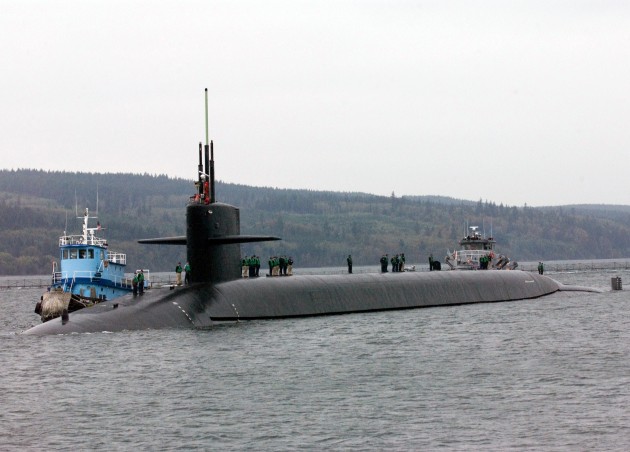Navy Sub Chief Rebuts Critics Claims On SSBN-X; Don’t Cut our Boats
Posted on
 WASHINGTON: If you think the military doesn’t listen to critics or friends, then you haven’t read one of the most interesting blog posts ever from the Pentagon. It’s by the Navy admiral in charge of the nation’s submarines.
WASHINGTON: If you think the military doesn’t listen to critics or friends, then you haven’t read one of the most interesting blog posts ever from the Pentagon. It’s by the Navy admiral in charge of the nation’s submarines.
The piece, by director of undersea warfare Rear. Adm. Richard Breckenridge, popped up on Navy Live, the service’s website, this afternoon. In it, the admiral states simply and clearly that unnamed people who believe that patrol records for the nuclear fleet show we can make deep cuts to the number of nuclear boats afloat are wrong. This looms large for the service because it plans to replace the current Ohio class nuclear missile submarines (boomers) with a new class known so far as SSBN-X. One problem: the Navy does not have enough money budgeted to pay the extra $5 billion a year the new subs will cost above the current shipbuilding plan.
Breckenridge says categorically that:
We have the right number of SSBNs to provide our required sea-based deterrent.
A source familiar with the issue tells me that the admiral is responding to a blog post by the wonderfully-named (and widely respected) Hans Kristensen at the Federation of American Scientists. Here’s the key bit from Kristensen’s recent blog post on the issue:
Does the U.S. Navy have more ballistic missile submarines than it needs?
Dramatic reductions in deterrent patrols – but not submarines – suggest so.
Over the past thirteen years, the number of deterrent patrols conducted each year by U.S. ballistic missile submarines (SSBNs) has declined by more than half.
During most of the same period, the size of the SSBN fleet has remained relatively steady at 14 boats, after four were retired in 2001-2003. Yet the decline in deterrent patrols has continued.
Breckenridge says — effectively — balderdash.
“Some contend we can reduce our SSBN force and still meet requirements. This is not true. The current force of 14 SSBNs is necessary to provide 10 operational SSBNs and support our national deterrence requirements. Our SSBN force is sized with a clear recognition of the need to sustain required at-sea deterrence even during refueling overhauls and other modernization and certifications.”
Cutting even one boat would leave the United States with a gap in the coverage provided by the least vulnerable part of our nuclear triad, the admiral says.
He says the “number of patrols “is a poor predictor of days doing the deterrence mission,” attacking the core of Kristensen’s argument.
At the end of his blog post (really an official Navy statement), Breckenridge also tackles an argument Kristensen and others — including some at the Office of Management and Budget — have made, namely that targeting requirements will shrink and the Navy could compensate for fewer boats by stuffing missiles with more warheads. “Strategic planners do not do things this way,” he says flatly. OMB mulled a plan to increase the number of missile tubes to cope with the need to strike more targets from fewer boats. As Breaking Defense readers know, it did not fly.
Subscribe to our newsletter
Promotions, new products and sales. Directly to your inbox.
